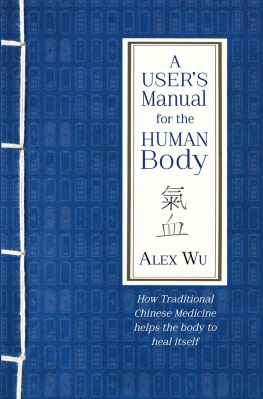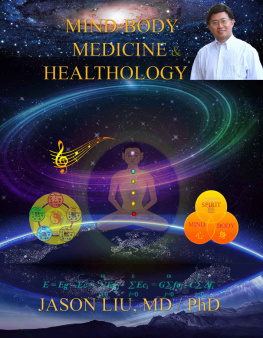About the author
Dr Kevin Fong is a doctor of medicine with a special
interest in human space exploration and extreme
environment physiology. He holds degrees in medicine,
astrophysics and engineering, and is an honorary senior
lecturer in physiology at University College London. He
has completed specialist training in anaesthesia and
intensive care medicine, has worked with NASA's Human
Adaptation and Countermeasures Office at Johnson
Space Center in Houston and the medical operations
group at Kennedy Space Center in Cape Canaveral. He
currently works as a consultant anaesthetist at University
College London Hospital, is founder and associate
director of the Centre for Altitude, Space and Extreme
Environment Medicine. He is a Wellcome Trust Public
Engagement Fellow.
His broadcasting career includes the acclaimed television
documentaries How to Mend a Broken Heart , Back from
the Dead and To Boldly Go , while he regularly presents
programmes on BBC Radio 4 and writes for the
Guardian .
Acknowledgements
There are many without whom this book would not have been possible. Foremost among them: Will Francis for chasing me for so many years to write something and Rupert Lancaster at Hodder for having faith in me and the idea. I had the great fortune to be in the hands of brilliant and eternally patient editor Tara Gladden. Her contributions vastly improved the text and I only hope she can forgive my many crimes against grammar and punctuation. Thanks also to the forever smiling Assistant Editor, Kate Miles who somehow always made me feel like things were running smoothly. For the inspired cover art my gratitude goes to Alice Laurent and Cliff Webb who did things with my heart and lungs that I never before thought possible. And thanks also to Kerry Hood on the publicity side who somehow managed the same with my diary.
I must finally say a huge thank you to the many people who have helped me along the way. It occurred to me that author and evolutionary biochemist Nick Lane, having bashed the idea of the importance of mitochondria and bioenergetics into my head over beers in the Jeremy Bentham pub, played a more important role than perhaps he knew. And Im particularly grateful to those who read, commented and corrected, among them Mike Herd, Adam Rutherford, Mark Paul, Viki Mitchell and Neil Nixon. And none of this could have happened without Sue Rider and Sophie Kingston-Smith who are always there trying to manage the chaos that is the rest of my life.
Perhaps the biggest sacrifice was made by my wife Dee and our boys, who have given up weekends, evenings and holidays for too long to let me get to the end of this. Special thanks to the Wellcome Trust, the BBC and particularly to my colleagues and friends at University College London Hospital for allowing me to continue to explore and of course to my parents for encouraging me to do so in the first place.
CHAPTER 1
ICE

5 Jan 1911: Captain Scotts ship Terra Nova seen from the interior of a teardrop-shaped ice cavern one of expedition photographer Herbert Pontings breathtaking Antarctic images
Robert Falcon Scott is dying, slowly succumbing to hypothermia in a tent pitched on the wastelands of the Ross Ice Shelf, full of the weary knowledge that he was not the first explorer to reach the South Pole only the first to have lost an entire expeditionary party doing so. It is 1912. Antarctica is as inaccessible as it is fraught with risk; and that, of course, is its attraction, leading men to pit themselves and their lives against its challenges.
Having been beaten to the pole by Roald Amundsens Norwegian expedition, Scott is now embarking on a race of a different kind: the scramble to write his letters to the next of kin of his expedition team, telling of their brilliance and honour, and taking responsibility for having led them to their deaths. Time is against him.
Scotts life is a property distributed across the many trillions of cells that comprise his body. Like all human beings, he exists in a state of tension. And by that I mean simply that nature seeks equipoise: it would like, as far as possible, for all things to be as equal as they can be.
The default state for an atom or molecule is electrical neutrality. Here the number of positively charged protons, in their composite nuclei, and negatively charged electrons, in orbit around them, is equal. But with a little effort atoms and molecules can be made to lose or gain one or more electrons, and in so doing lose their neutrality. This is achieved by imparting a little energy through chemical reaction, radiation or electrical discharge. When they do this they become ions and change in nature. They become more dynamic and are capable of being influenced by, and generating, electrical or magnetic fields. In the body ions can flow across porous barriers, negative charge seeking to neutralise positive charge.
The machinery of our cells is designed to separate charged ions across cell membranes. That process of separation, of creating inequality, leaves a system out of step with the simple arrangement that physics would prefer, and creates the potential for something far more dynamic: a person.
To give a sense of what I mean, imagine a budget airline operating a plane that is only half full. Say that its a long-haul flight, and that the airline chooses to expend a little energy in getting its cabin crew to cram all of those passengers like sardines into the front half of the plane, leaving the rear of the aircraft entirely empty. (This, I think youll agree, is a situation with the potential for the release of a lot of pent-up energy.) Now imagine that the chief executive of the airline decides people can sit where they like, just so long as they pay him another 10 for the privilege. The passengers shout and swear a bit, but eventually most of them decide that being crammed into the front of the plane is worse than paying the money and being able to spread themselves out evenly across all those lovely empty seats. The result is a plane whose passengers are distributed more evenly, and an airline executive with some extra cash in his pocket.
What the airline does with the passengers and cash is what the body does with ions and energy. By expending energy in creating artificial inequality in the case of the body, by pumping ions to where they dont want to be and then harvesting and storing energy as the system attempts to return to equilibrium, you can save energy for later use.
We see this all around us in nature. In weather systems, for example, winds blow from areas of high pressure to those of lower pressure. They are a manifestation of inequalities in pressure, and the systems natural tendency to smooth those differences out. And in the same way that this difference leads to a wind whose energy can be harvested by turbines, so the flow of ions across cell membranes can be exploited by the human body.
The flow of ions, along with the beautifully elegant machinery that exploits it, is what makes complex life possible, what keeps the whole that is greater than the sum of its parts the whole that is ultimately Scott ticking over.
At medical school I failed to appreciate the importance or beauty of that biochemistry. Confronted by blackboards full of arcane symbols and equations, I chose instead to stretch out across the back row. I remember dozing gently while professors of biochemistry laboured, largely in vain, to convey an understanding of the intricacies of cellular processes: molecular pumps moving ions across cell membranes to create that all-essential inequality. In the gloom of the lecture theatre those chemical events seemed esoteric, only vaguely connected with the stuff of medicine and life. To me, astrophysicist turned medical student, it came a poor fourth in the league table of Important Stuff, after anatomy, whole body physiology and my own need for sleep.
Next page








![Frances M. Ashcroft - Life at the Extremes: [The Science of Survival]](/uploads/posts/book/49583/thumbs/frances-m-ashcroft-life-at-the-extremes-the.jpg)
